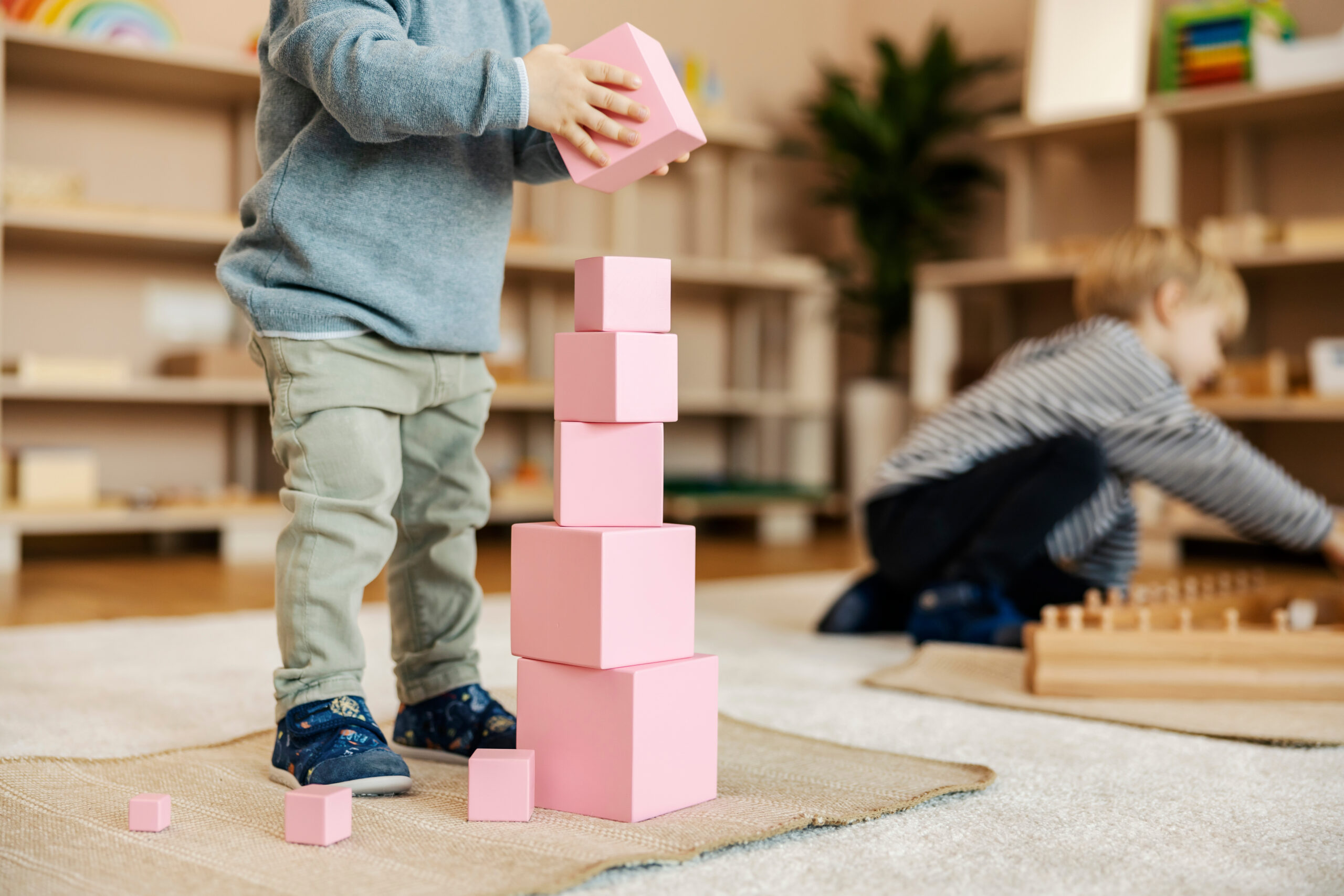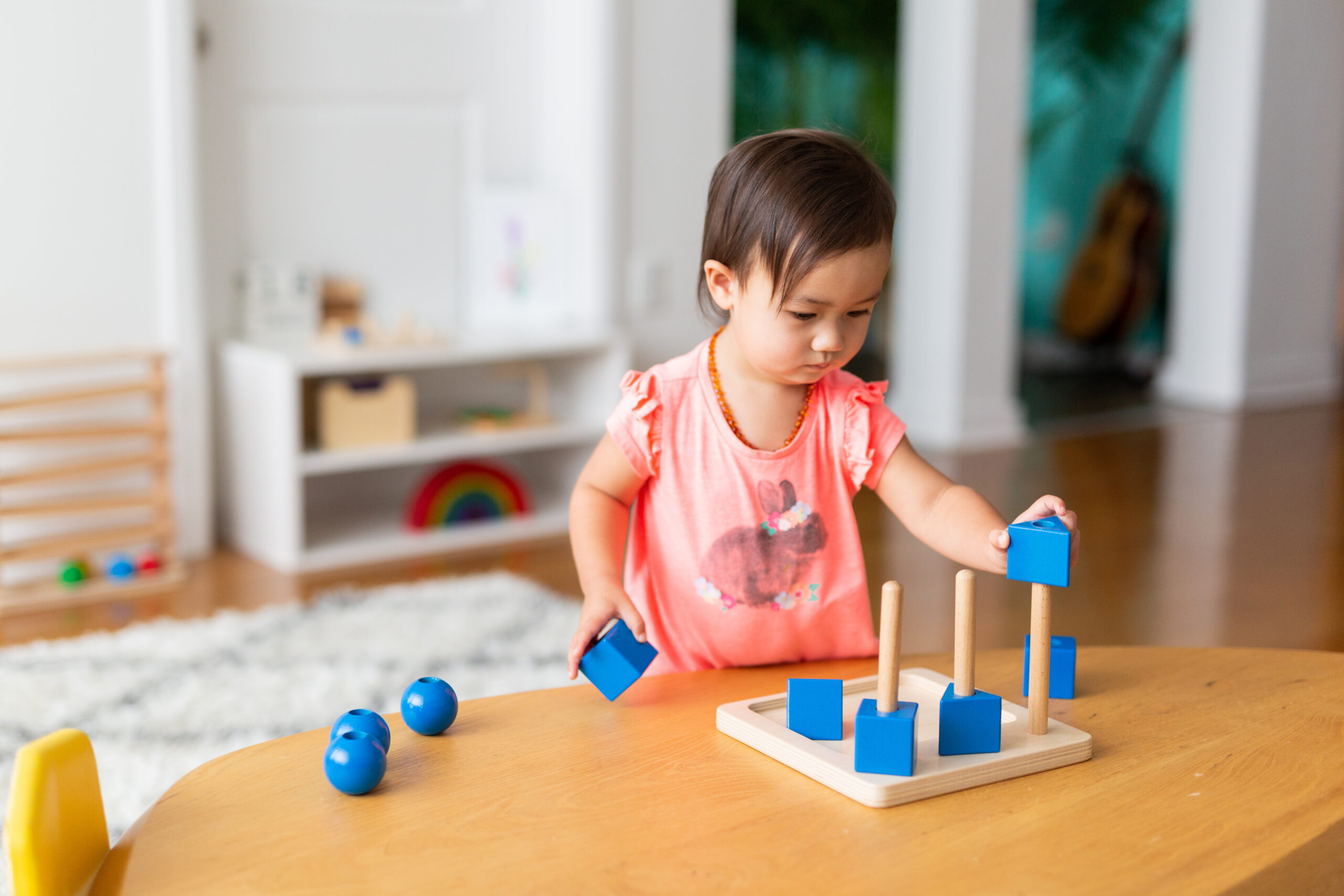Parents have lots of choices when it comes to picking the right school for their child. You might have heard about Montessori schools, but maybe you aren’t sure what they are or how they’re different from traditional schools. Whether you’re considering Montessori for your child or just curious about this unique type of education, here are a few ways Montessori schools stand out.
Assessments
Montessori: Montessori instructors evaluate how a child is doing by observing how they get along with their classmates, watching the child play, and talking with them.
Traditional: Traditional schools typically give tests and grades for learning. Tests happen multiple times throughout the school year.
Classroom Environment
Montessori: Montessori schools have calm classroom environments with furniture and materials that are at a child’s level. Students can sit down to do their work, if they want, but they can also explore the classroom and learn by doing.
Traditional: At traditional schools, students sit at desks or tables arranged in rows or groups, and the teacher leads the class.
Curriculum
Montessori: In Montessori school, students learn by doing activities and using special materials — oftentimes, materials found in nature or practical tools. Teachers help students with their projects on an individual basis.
Traditional: In traditional school, students get less time for one-on-one instruction, because teachers teach the whole class the same lesson at the same time.
Flexibility
Montessori: Montessori schools can be more flexible with how kids learn. This type of school is ideal for a child who might need more time to absorb a lesson, or needs a flexible daily schedule.
Traditional: Traditional schools have a more set way of teaching. This type of school has attendance expectations, and students are required to be there the whole school day.
Life Skills and Independence
Traditional: Montessori teaches kids how to do things by themselves. They want kids to be curious about their environment and solve problems creatively.
Traditional: Traditional schools sometimes incorporate life skills into lessons, but mostly the focus is on teaching a standardized curriculum.
Parent Involvement
Montessori: Montessori schools want parents to help and be part of the classroom. There are usually lots of opportunities for parents or caregivers to help in the classroom alongside the teacher.
Traditional: Traditional schools also want parents to be a part of the school, by joining events and meeting teachers. There are typically lots of ways parents and caregivers can get involved, from helping at classroom parties to chaperoning field trips to attending PTO meetings and lots of other ways.
School Philosophy
Montessori: Child-centered learning is emphasized in Montessori school. Students have the freedom to choose their activities and pace of learning, and Montessori schools help kids learn soft skills, like how to be more independent, control their behavior, and feel motivated by their own interests.
Traditional: Teachers at traditional schools follow a more structured curriculum and standardized instruction. Students typically go through the same material at the same pace.
Social and Emotional Development
Montessori: Montessori emphasizes social and emotional development in children, and focuses on things like learning to get along with others and understanding feelings.
Traditional: Traditional schools also value social and emotional development, and encourage children to include others during playtime and during group activities.
Student Age
Montessori: In Montessori, kids of different ages learn together. It’s not uncommon to see older kids helping younger kids in one classroom.
Traditional: In traditional school, students are usually all around the same age in each class.
In the end, the main goal is to help your child grow into a strong, kind and skilled adult. Whether you choose the Montessori style or a more traditional route depends on what your child likes and needs from a school. By carefully considering the school’s unique features and benefits, you can be confident that you’re helping to lay a solid foundation for your child’s future.




